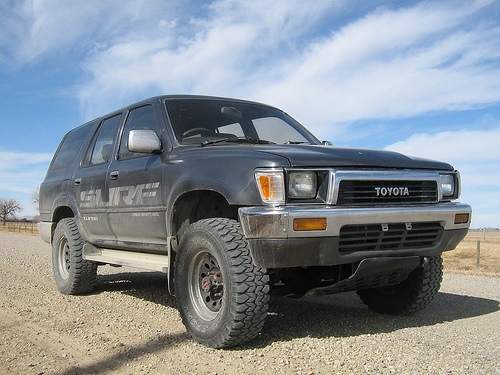
The brake booster on a Toyota increases the force applied to the brakes and reduces the distance the brake pedal has to travel. If your vehicle requires excessive effort to slow it down, or the brakes only engage when the pedal is against the floor, your brake booster likely needs to be replaced.
The brake booster is located on the driver's side of the firewall, behind the master cylinder. On some models it may be partially covered by the left front fender. It is a large cylinder connected to the engine by a vacuum hose.
Remove the four nuts that connect the brake booster to the master cylinder and gently slide the master cylinder forward. Be careful not to damage the steel brake lines that are attached to the master cylinder. In the passenger cabin, disconnect the brake pedal push rod by removing the retaining clip and disengaging the clevis pin. Loosen the spring clamp that connects the vacuum hose to the brake booster and remove the vacuum line. Then remove the four nuts that connect the brake booster to the firewall. Remove the booster from the vehicle.
Clean any gasket material off the mounting surface on the firewall and put a new brake booster gasket in place. Drop the booster into position and reinstall the four nuts that secure it. Reattach the vacuum hose to the brake booster and reinstall the spring clamp that retains it. Move inside the passenger cabin. Reconnect the brake pedal push rod and reinstall the clevis pin and retaining clip. Install a new gasket between the brake booster and master cylinder and slide the master cylinder into position against the face of the brake booster. Reinstall the four nuts that secure it. Check the fluid in the master cylinder and fill it if any was lost.
Turn on the engine and press the brake pedal. If the brakes feel spongy, you will need to bleed the brake system. Jack up the vehicle and remove the wheels. Begin with the wheel farthest away from the master cylinder; on most vehicles this will be the right rear. Locate the bleed screw on the brake caliper or wheel cylinder. Have an assistant hold the brake pedal down while you turn the screw to open it. Be careful not to put too much stress on the bleed screw--you could break it. Place a length of plastic tubing over the screw and immerse the other end of the tube in a jar of brake fluid. Look for bubbles in the fluid that flows out of the tube. Make sure the tube is immersed in brake fluid at all times. Tighten the screw and have the assistant pump the brake pedal. Continue the process until there are no more bubbles in the fluid. Repeat this process on the other wheels.